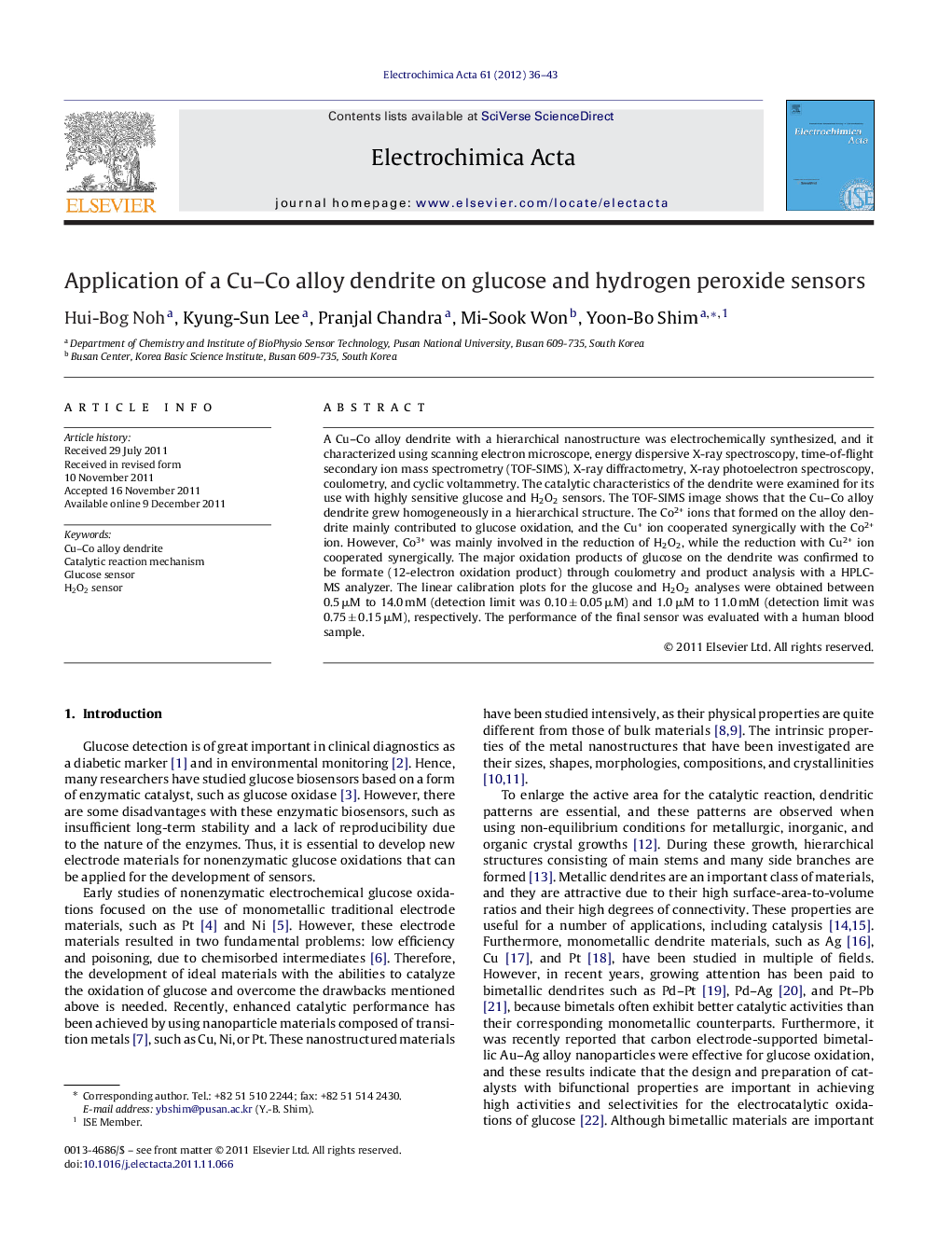| Article ID | Journal | Published Year | Pages | File Type |
|---|---|---|---|---|
| 188921 | Electrochimica Acta | 2012 | 8 Pages |
A Cu–Co alloy dendrite with a hierarchical nanostructure was electrochemically synthesized, and it characterized using scanning electron microscope, energy dispersive X-ray spectroscopy, time-of-flight secondary ion mass spectrometry (TOF-SIMS), X-ray diffractometry, X-ray photoelectron spectroscopy, coulometry, and cyclic voltammetry. The catalytic characteristics of the dendrite were examined for its use with highly sensitive glucose and H2O2 sensors. The TOF-SIMS image shows that the Cu–Co alloy dendrite grew homogeneously in a hierarchical structure. The Co2+ ions that formed on the alloy dendrite mainly contributed to glucose oxidation, and the Cu+ ion cooperated synergically with the Co2+ ion. However, Co3+ was mainly involved in the reduction of H2O2, while the reduction with Cu2+ ion cooperated synergically. The major oxidation products of glucose on the dendrite was confirmed to be formate (12-electron oxidation product) through coulometry and product analysis with a HPLC-MS analyzer. The linear calibration plots for the glucose and H2O2 analyses were obtained between 0.5 μM to 14.0 mM (detection limit was 0.10 ± 0.05 μM) and 1.0 μM to 11.0 mM (detection limit was 0.75 ± 0.15 μM), respectively. The performance of the final sensor was evaluated with a human blood sample.
► Cu–Co alloy dendrite in nanostructured hierarchical structure was electrochemically synthesized. ► Surface morphology and crystal structure of the dendrites were characterized using SEM, TOF-SIMS, XRD, etc. ► Oxidation mechanism of glucose at Cu–Co alloy dendrite was evaluated. ► The presence of Co in alloy enhanced catalytic property of the dendrite 10 times compared with single metal dendrites. ► The glucose and H2O2 sensors using the alloy dendrite exhibited highly sensitive responses.
